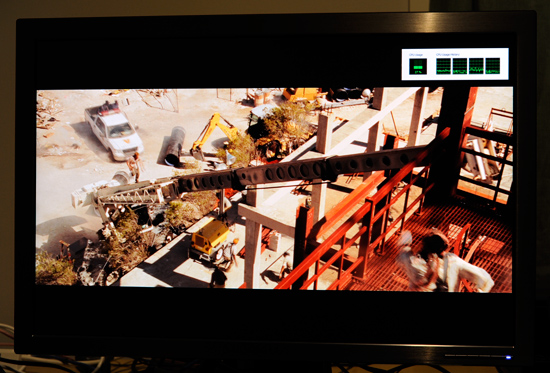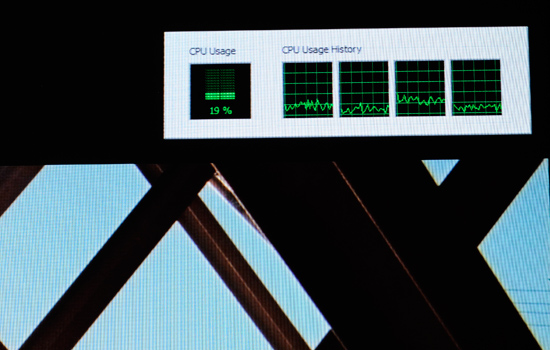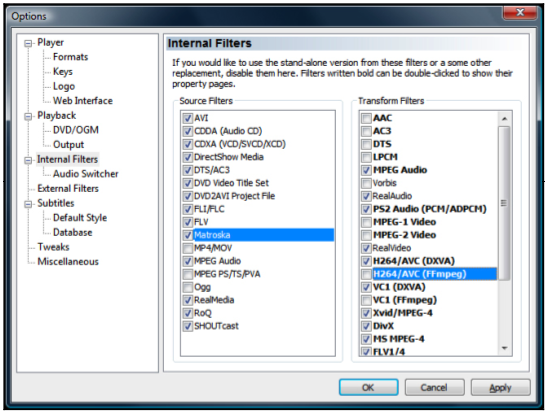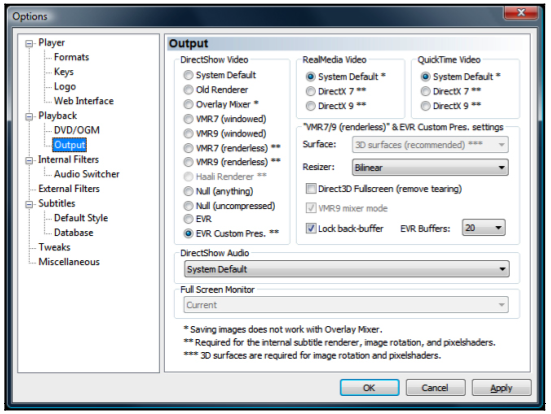Zotac's Ion: The World's First mini-ITX Ion Board
by Anand Lal Shimpi on May 12, 2009 12:00 AM EST- Posted in
- GPUs
Blu-ray Playback: It Works Quite Well
I tried using the Zotac Ion to watch Blu-ray movies, after all, that’s one of the major reasons to get this thing over the much cheaper Intel alternative. NVIDIA’s Ion chipset (aka GeForce 9300) can fully decode H.264 and thus make high definition movies watchable on the otherwise incapable Atom CPU.
Anything that supports NVIDIA’s PureVideo HD will work on the Ion board, in this case I used Cyberlink’s PowerDVD 9 Ultra - the latest version off of Cyberlink’s website. I fired up Casino Royale and watched, the CPU utilization across all four virtual cores (two physical cores) ranged between 19 - 27% on average. At times I saw steady peaks at 36% and the highest I ever saw was 50% in an unexpectedly stressful scene. With the dual-core Atom, I never saw any dropped frames.

The high CPU utilization is simply due to the content decryption required by every copy protected Blu-ray disc, the actual decode is being done completely in hardware. If you playback an unencrypted Blu-ray disc you get CPU utilization in the 10 - 14% range.

Earlier versions of PowerDVD were not well optimized for Atom, but the latest updates to PowerDVD 8 and PowerDVD 9 ensure smooth playback on even a single-core Atom/Ion system (I used an older version of PowerDVD in my short lived Ion Blu-ray Investigation which was the cause for poor performance in those tests). Note that at one point in my testing I saw the CPU usage hit 50% on the Atom 330, which means it would be at 100% with an Atom 230. The spike only lasted for a second or two but it's possible for a single-core Atom setup to stutter in situations like that if you have a background task running at the same time.
You can even get hardware acceleration using the Ion board under Media Player Classic - Home Cinema. Using the latest stable build of MPC-HC you simply need to go to the Options menu (View -> Options) and configure a few items. Click on Output then select EVR or EVR Pres. if you want to enable subtitles.

Then click on the Internal Filters option and disable all FFmpeg transform filters, enable all DXVA transform filters and enable the Matroska source filter (for playing back MKVs).

If you configure MPC-HC as I described above you'll get full hardware acceleration on the Ion board. This is a great way of watching your own ripped content. Without encryption CPU utilization ends up being in the 10 - 14% range, allowing you to even do things in the background while you're watching a video. I would caution you against doing too much however, so much as scrolling the volume slider up/down will cause the video playback to stutter. You're probably better off just being happy that you're not dropping any frames and not touch anything while you enjoy your movie.










93 Comments
View All Comments
tshen83 - Tuesday, May 12, 2009 - link
A good article. GF9300 has a TDP of 12W. So combined with 8W Atom 330, and 80-90% efficient power supply, gives you the 25W load power figure you see which is phenomenal.(Not to be confused with the brand name from AMD that stands for Opteron rejects)Let me ask you, Anand, a question: just what the fuck is Johan doing these days pumping Quad Socket 8393SE(you can assume the 137W TDP Istanbuls when they come out too) against Nehalem Xeon X5570? One of them is a $10,000 set of CPUs, and the other is $3,000 worth of CPUs let alone (137W*4 power consumption vs 95W*2 on the Xeons) Besides that, now that the fucker is trying to invalidate VMmark. What a Belgian joke.
Griswold - Wednesday, May 13, 2009 - link
You're quite the asshole, arent you?AshleyComputer - Wednesday, July 21, 2010 - link
ION have different, use MCP79 or MCP7A,can do GF9400+Atom 330, GF9400+Atom 230; or GF9300+Atom 330, or GF9300+Atom 230.
If any want to know more about ION, please try to browse: www.micputer.com.